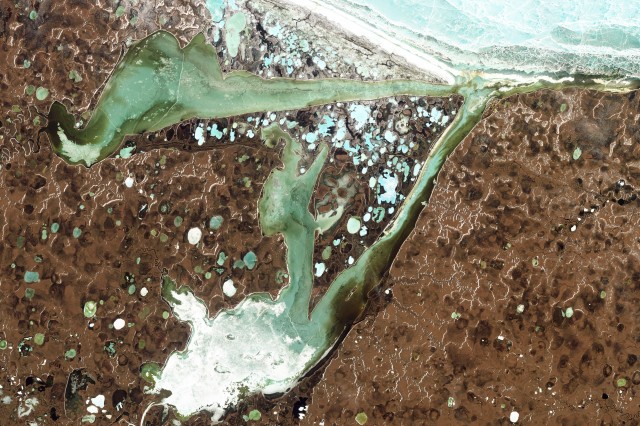Off Siberia’s Arctic coast, the seafloor belches methane
Ars Technica » Scientific Method 2013-11-30

If you can’t find the hole in a leaky bike tire, one thing you can do is stick it underwater. The line of rising bubbles will lead you right to the damaged patch of rubber. You can use a similar trick if you’re trying to work out how methane is being released from thawing permafrost—you just have to look in the shallow Arctic waters off the Siberian coast.
The continental shelf here is broad, and much of it was exposed during the last ice age when sea levels were about 130 meters (nearly 430 feet) lower. As a result, the area was permafrost before it was inundated over 5,000 years ago. The Arctic Ocean is cold, to be sure, but it’s not frozen solid. That means it’s warmer than the frigid air temperatures on land, and the inundated permafrost has slowly been thawing—very slowly.
Within and below that thick layer of permafrost, there’s organic matter and methane. Some of that methane—particularly the deeper stuff—is in the form of methane hydrates, which are made of molecular cages of ice that hold onto methane. As the permafrost melts, the frozen organic matter can start to rot, generating carbon dioxide and methane. If the thaw were to reach down to the depths where methane hydrates are present, they could release their molecular prisoners too.
Read 9 remaining paragraphs | Comments




